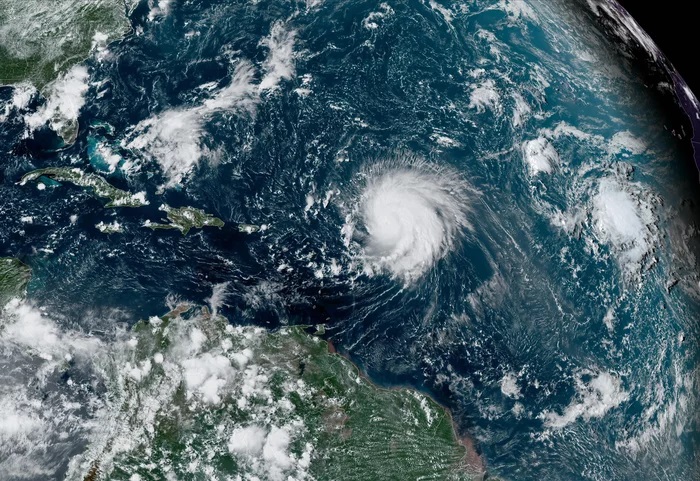
You don’t have to be a meteorologist to know that last summer was really hot. Many parts of the U.S. sweltered through blistering temperatures.
- Cities from Chicago to New York to Washington were also blanketed in smoke from Canadian wildfires, setting records for bad air quality.
- In the Florida Keys, the ocean reached hot tub temperatures.
- And perhaps nowhere had it worse than Phoenix, which hit 110 degrees on 31 consecutive days.
Cities from Chicago to New York to Washington were also blanketed in smoke from Canadian wildfires, setting records for bad air quality.
2023 was the hottest year on record for many places in the U.S., and by far the hottest year for the planet as a whole.
But we’re likely to see even hotter summers coming, with even more temperature records broken, says Karin Gleason with NOAA’s National Centers for Environmental Information.
“We are at record levels for 11 consecutive months now – so since last June through April,” she said. “And we’re still counting, of course.”
It’s already been so hot that 2024 is guaranteed to be one of the five hottest years ever recorded. As another sweltering summer approaches, the potential for climate-fueled disaster comes with it.
More frequent, stronger hurricanes
One hint that has scientists predicting we’re in for a hot summer: abnormally high ocean temperatures, especially in the Atlantic.
A hot Atlantic can also mean more hurricanes — and the forecast for the season, which starts June 1, is out. The National Hurricane Center predicts between 17 and 25 storms in the Atlantic this year. At least eight of them are expected to be full-blown hurricanes.
NOAA Administrator Rick Spinrad says this hurricane season is going to be extraordinary, adding: “The forecast is the highest NOAA has ever issued for the May outlook.”
Gavin Schmidt, a climate scientist at NASA, says human-caused climate change is the main cause for off-the-charts heat in the Atlantic.
Along with warm ocean temperatures, wind conditions have been favorable to hurricane formation: vertical winds in the Atlantic are less likely to tear apart storms as they form.
The hyperactive storm forecast spells danger for tens of millions of people living in the eastern half of the U.S.
“Remember it only takes one storm to devastate a community,” Spinrad says. “And it’s prudent to prepare now because once a storm is headed your way, it all happens so rapidly you won’t have the time to plan and prepare at that point.”
Hotter weather can mean more destructive fire seasons
Following last year’s sweltering summer, parts of the U.S. also saw a very dry winter due to the El Niño climate pattern, which can increase fear of wildfires.
That’s putting fire managers in the West on edge, because roughly a quarter of federal wildland firefighter jobs are vacant.
“I know more people that are looking for a way out than are looking for a way in,” says Lucas Mayfield, who runs the advocacy group Grassroots Wildland Firefighters.
He says, in some national forests, the job vacancy rate is far higher than 25%; and he is particularly troubled that experienced squad leaders are leaving.
The cost of living in the West is partially responsible for the labor shortage, but the demands of the job are getting more intense as climate change makes fires more dangerous.
“Those of us who are in the profession are in it for a reason,” says fire manager Grant Beebe. “But we shouldn’t expect people to sacrifice their health, their mental health, their families to do this job, right?”
President Joe Biden enacted a temporary pay bump for firefighters in 2021, and now there is pressure on Congress to pass a stalled bill that would make that bump permanent.
This episode of Consider This from NPR was produced by Connor Donevan and Tyler Bartlam. It was edited by Courtney Dorning, Rachel Waldholz and Eric Whitney. Our executive producer is Sami Yenigun.




